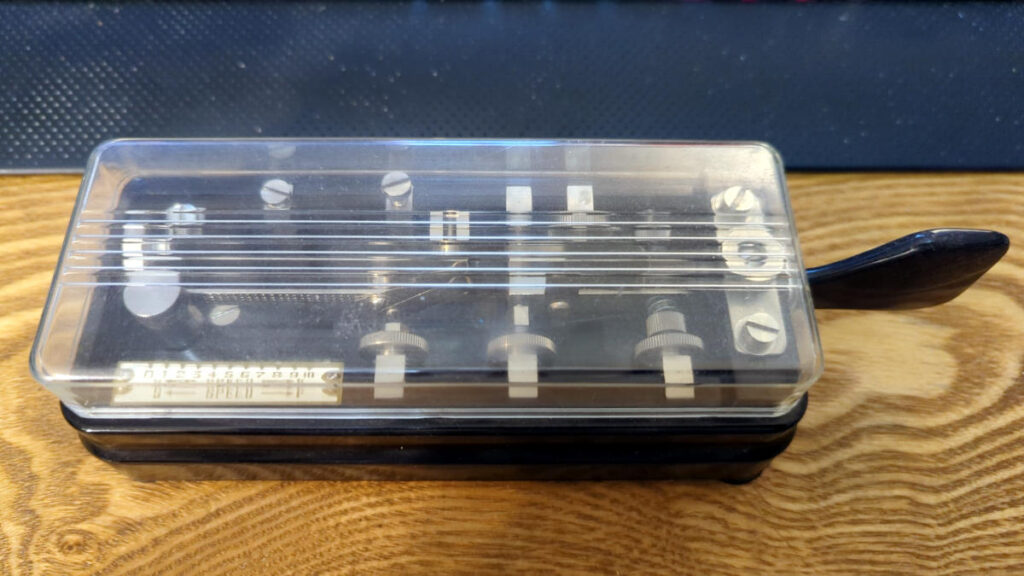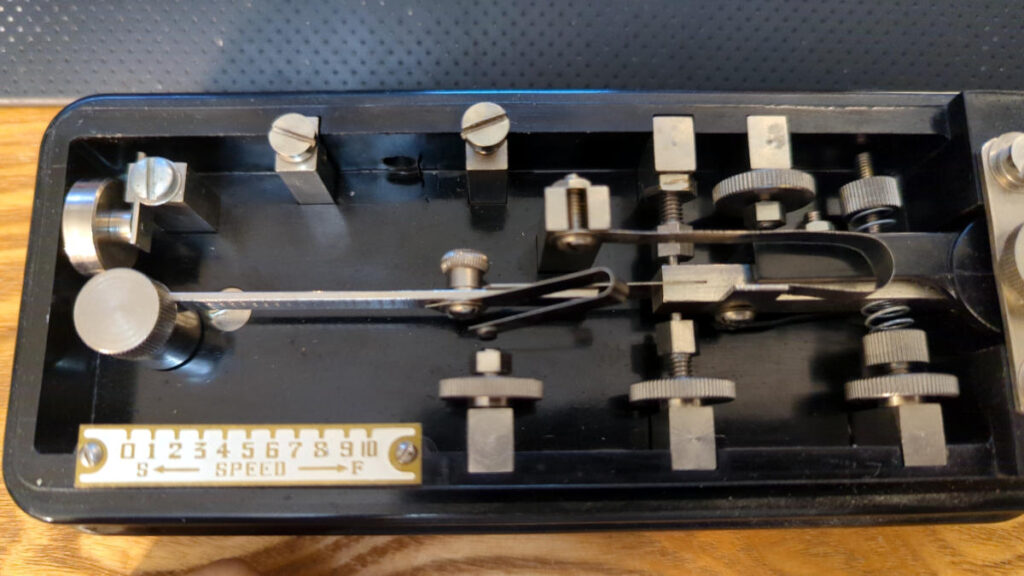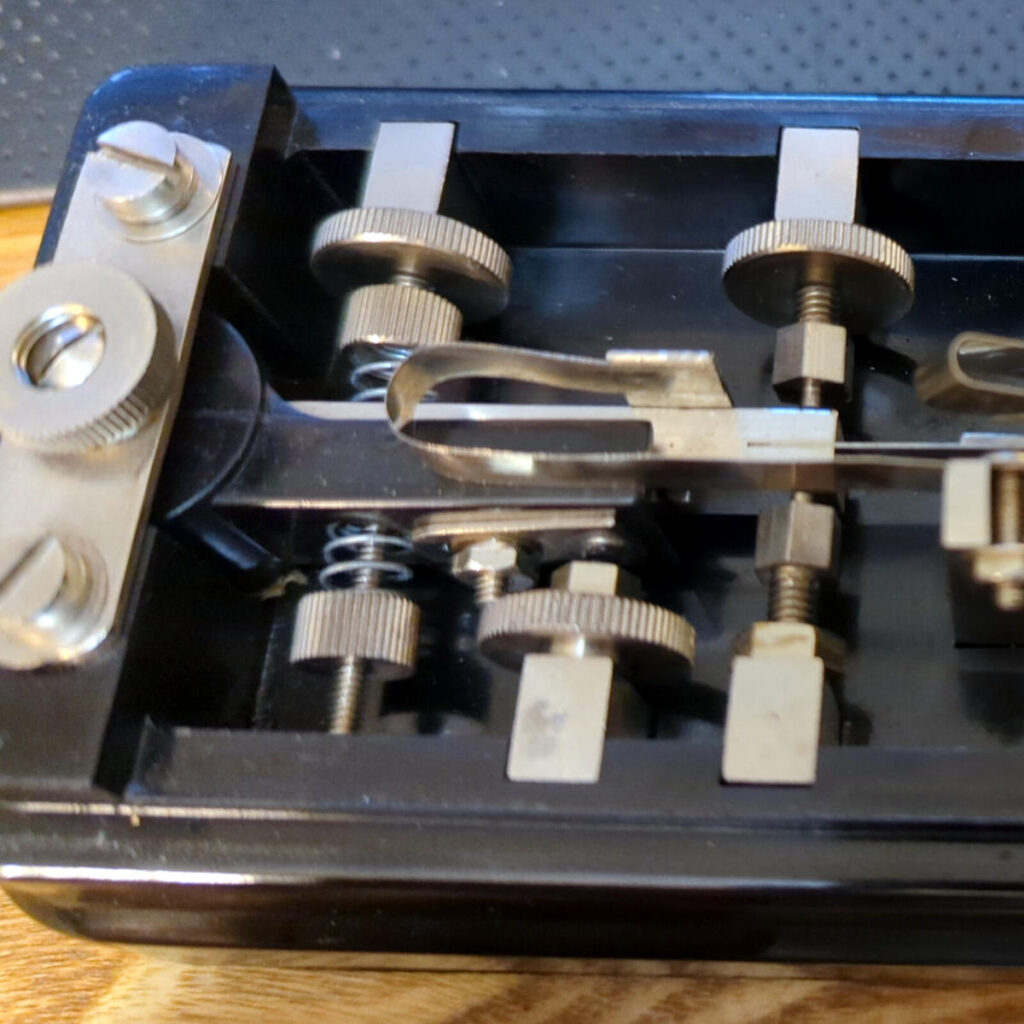The Hi-Mound BK-100 bug style key is one that I picked up at a local hamfest a few years ago. It’s a very distinctive looking and easily recognizable key and commonly referred to as a “coffin bug” because of its shape. The person I bought it from mentioned that it’s rare to find one without cracks or damage to the plastic cover. This one is in pretty good shape and the plastic cover is undamaged aside from a bit of age-related haze.




It’s a pretty large and heavy key, about 22 cm long (including the lever), 7.5 cm wide and 6 cm tall including the cover. Except for the speed setting plate, there are no identifying markings at all anywhere on the bug.
As keys go, I think this one is pretty neat. It falls in the semi-automatic class of keys. Dahs are generated by pushing the lever to the left, which is essentially a straight key. The tone is generated as long as the lever is held to the left.
The dits on the other hand, are generated by pushing the lever to the right which starts a weighted arm vibrating.
As the arm vibrates, the contact on the right of the above image is opened and closed, generating the dits. The arm continues to vibrate as long as the lever is pushed to the right, but eventually dampens out. The large knob on the left side is a weight on the arm that controls how fast the arm vibrates. Sliding the arm to the right makes the arm vibrate faster, producing a faster dit rate. If you don’t press the lever to the right hard enough though, the arm vibrates but not enough to cause the spring to open and close the contact.
There are lots of knurled knobs that can be used to adjust the contact spacing, lever spring tension, and lever swing distance for both the dit and dah side to your preference.
There are only two terminal connections, so it’s wired up like a conventional straight key. One terminal is the ground/common, and the other terminal goes to the contacts.
I don’t know if there’s any kind of chart or table that converts the 0-10 speed indicator on the plate to a dit WPM rate, but it shouldn’t be too hard to work out.
I haven’t used the BK-100 as much as I have my other keys. Although operating it is straight forward enough, it’s a different enough style of finger movements that going back and forth between this and a straight key gets a bit confusing. It’s a very nice key to operate though. One of these days I’ll get it set up so that I can start practicing with it more.
Discover more from AB4UG Radioblog
Subscribe to get the latest posts sent to your email.

